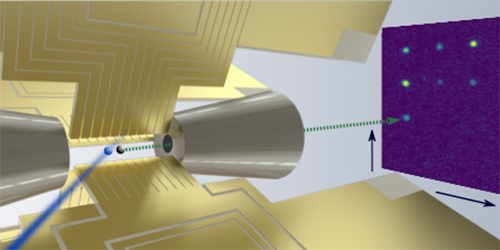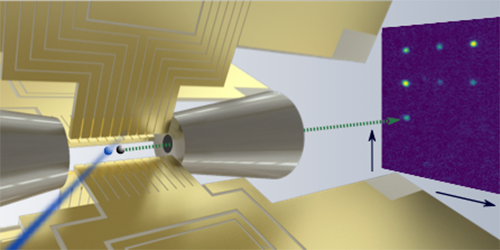Placing Single Impurities into a Crystal
Solid-state materials that contain specific impurities, such as nitrogen-vacancy centers in diamond, make promising platforms for future quantum information technologies. The quantum states of the impurities can be tailored to perform quantum logic operations, and these states can then be read out via the impurities’ fluorescence. However, implanting single-ion impurities inside crystals consistently and precisely has proved challenging. Current methods involve accelerating the ions to high energies, which allows detection of the implantation events but sacrifices spatial precision. A new implantation technique takes a step towards solving this problem. A team from Johannes Gutenberg University Mainz demonstrated that they could embed ions in a crystal at low energy to form patterns reliably and with nanometer-scale precision.
The researchers insert praseodymium ions into crystals of yttrium aluminum garnet (YAG), a synthetic crystal commonly used as a lasing medium. To do this, they trap and cool praseodymium ions using lasers and electric fields. Then they accelerate the ions one at a time toward the crystal, producing an evenly spaced array 6 nm below the crystal’s surface. After annealing the crystal at 1200∘C, the researchers use confocal microscopy to confirm that the impurities successfully form fluorescing color centers inside the crystal. They found that they could control the placement of the impurities to 30-nm precision and that up to 50% of the impurities fluoresced—a success rate comparable to techniques that require ion energies 3 orders of magnitude higher. In the future, the researchers say, this technique could be widely adapted to implant other types of impurities into a variety of solid-state systems.
This research is published in Physical Review Letters.
–Sophia Chen
Sophia Chen is a freelance science writer based in Tucson, Arizona.





